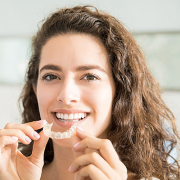How Orthodontic Treatment Can Improve Jaw Pain and Headaches
If you’re a person who’s always suffered from more headaches than your friends and family, or for whom jaw pain is an everyday fact of life, the problem might not be what you think it is. There are many people who have the same or similar type of pain that you do, and who have found relief through orthodontic treatment.Orthodontic treatment in Wichita, KS not only straightens teeth but can also help alleviate discomfort by addressing the underlying causes of jaw tension and improper bite function.
The Link Between Jaw Misalignment and Pain
The jaw muscles and joints are designed to work together in a very precise way. If your teeth are out of alignment, it puts a whole lot of strain on this area, which is why you feel pain and have inflammation. It’s not unlike your wheels on your car. When they aren’t in alignment, it strains other, nearby parts, causing them to break down faster. Your car can’t operate as it should. An overbite, underbite, crossbite or even crowded teeth can place excessive pressure on the TMJ, resulting in pain that radiates to the temples, forehead and even the neck.
How Orthodontic Treatment Helps
Braces and clear aligners gradually shift teeth into their proper positions, improving bite alignment and reducing stress on the jaw. By creating a more balanced bite, orthodontic treatment allows the muscles and joints to function naturally, easing tension and preventing excessive clenching or grinding, which are common causes of headaches.
If jaw pain or frequent headaches fromTMJ in Wichita, KS or other sources have become a persistent issue, an orthodontic evaluation could be the key to relief. By addressing bite irregularities, orthodontic treatment can create lasting improvements in both oral health and overall well-being. With a properly aligned bite, you can enjoy a more comfortable, pain-free smile for years to come.









